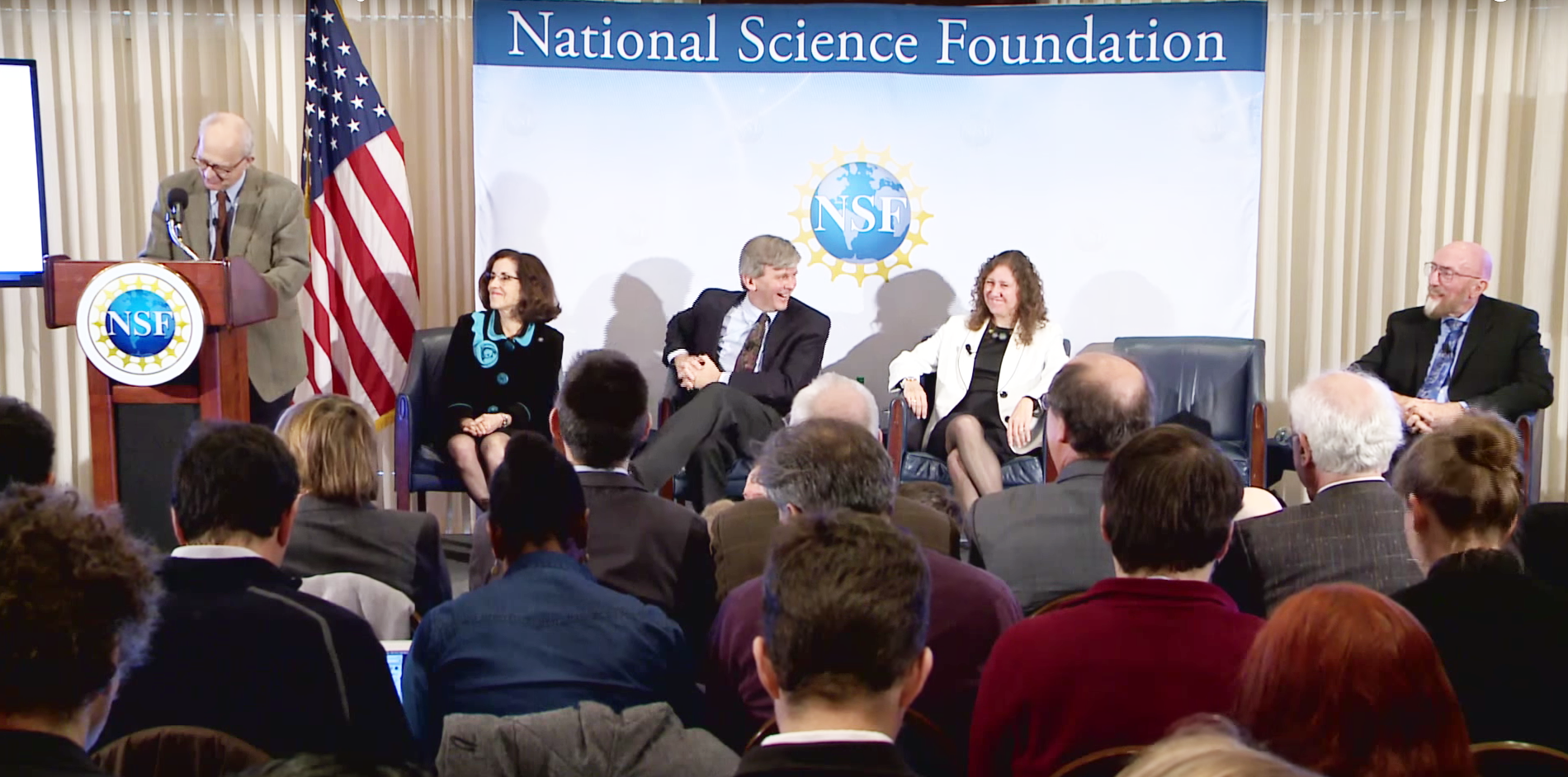Several College of William and Mary professors, graduate and undergraduate students helped usher in a new era of astronomy Feb. 11 with the announcement of the detection and interpretation of gravitational waves. The Laser Interferometer Gravitational-Wave Observatory team, which announced the discovery, comprised more than 1,000 scientists.
Physics professor Eugeniy Mikhailov spent three years at a LIGO Laboratory at the Massachusetts Institute of Technology before setting up his own laboratory at the College. Along with physics graduate students Mi Zhang and Gleb Romanov and undergraduate Hunter Rew ’16, Mikhailov has been named as a co-author in LIGO’s paper published Thursday in Physical Review Letters.
Gravitational waves are disturbances in space-time caused by massive releases of energy.
“The only information about the universe we’ve gotten has been electromagnetic radiation. Even the first humans saw stars through EM radiation … for the first time in human history, we will get information from a completely new type of radiation,” physics professor Marc Sher, who did not participate in the project, said in an email.
The detection of gravitational waves fulfills a prediction Albert Einstein made in the early 1900s and is an experimental milestone. But, more importantly to Mikhailov, the signal is interpreted as coming from the merger of two black holes, 1.3 billion light years away.
For the first time in human history, we will get information from a completely new type of radiation. — Physics professor Marc Sher
“If it was only the part of the detection by itself, it would be like if I switched to Russian,” Mikhailov said. “You would hear something, there would be a person talking to you, but you wouldn’t understand … But you understanding me, this is the important part.”
This ability to interpret the signals allows for the birth of gravitational wave astronomy. As a whole new way to look at nature, gravitational wave astronomy might even have some significant advantages over other areas of astronomy because of how quick and tiny gravitational waves are. Their interactions with matter are very weak, and therefore the wave has very little effect on what it passes through. Thus, scientists could potentially see the inside of a star.
“You look at your own body and you don’t know much about that’s inside,” Mikhailov said. “You can probably push a little bit, but all we can see is the skin. But then ultrasounds appeared, and now we can look at babies growing inside of their mothers. We would be able to look inside of the object which is not accessible to us by any other means.”
The signals LIGO is looking for are unfathomably tiny, and there is a lot of random noise that the detectors pick up. Mikhailov’s research with students is addressing the problem of noise in several ways, including a process of modifying light. Mikhailov calls this “squeezed light,” meaning it suppresses quantum noise. Much like how a professor walking in a class can quiet chatty students, squeezed light should help quiet random noise so meaningful signals can be heard.
I operated a large, bazooka-looking magnetometer, carrying it from site to site. At one point I even traveled through Tuscan mountains to measure a very quiet signal. — Melissa Guidry ’17
Beyond members of the LIGO Scientific Collaboration, several College undergraduates have been involved in LIGO summer research projects. Astronomy Club co-president and physics major Eve Chase ’16 worked at the Laboratoire AstroParticule et Cosmologie in Paris in the summer of 2014, coincidentally modeling an event similar to the one eventually detected by LIGO.
“I created an original computer program to model the expected gravitational wave signal of two black holes spiraling around one another and eventually colliding, releasing immense energy in gravitational waves,” Chase said in an email.
Similarly, Melissa Guidry ’17 worked this past summer at the European gravitational detector Virgo in Cascina, Italy. She was gathering data on what signals from magnetic fields look like, so the signals could be compared to and removed from the noise picked up by detectors, further refining the signal such that gravitational waves could be seen more easily.
“I operated a large, bazooka-looking magnetometer, carrying it from site to site. At one point I even traveled through Tuscan mountains to measure a very quiet signal,” Guidry said in an email.
After the announcement Thursday, the Physics Review Letters website crashed, as it was overloaded by visitors. A viewing of the press conference was held in William H. Small Hall, where students and faculty gathered to hear the news. Media coverage likened the discovery to Galileo’s invention of the telescope.
“To be a part of something so huge, something so beyond yourself that will benefit humanity so tremendously, is incredible …. Solving a problem and having the world take delight in it reminds you that science is much larger than your lab bench,” Guidry said.

